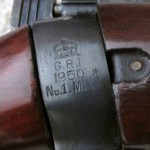While recently searching for Tom Koehler’s obituary, I was delighted to find Johnson and Crawford’s (2022) excellent “A Brief History of Archaeology at Ole Miss.” After reading it, I felt that fans of Ole Miss archaeology may also find it interesting to read about the department as it appeared to one of its undergraduates nearly 60 years ago.
Like many freshmen, I arrived on campus in 1965 without having given serious thought to a prospective major, or frankly, what I was going to do with a university degree. My new roommate was passionately interested in archaeology and argued that I should consider taking an introductory Anthro class. Back then, long before the advent of personal computers, the course registration process required students to crowd into a campus gym at their assigned times and go from table to table signing up for the classes offered that semester. Grouped by department, all but one of the registration tables in the gym looked pretty much the same. The exception was the Soc/Anth table, behind which sat Tom Koehler. With his beard, very un-Mississippi suit, gregarious personality, and, later, his black eye patch, Tom stood out like a dumpster fire in a vacant lot. He was a good ad for the Soc/Anth department and I joined others to sign up for Soc/Anth classes.








